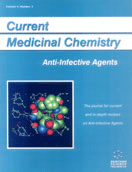Abstract
Highly active antiretroviral therapy regimens (usually three-drug combinations) have shown undisputable efficacy in the reduction of the morbidity and mortality of HIV-infected patients. However, these regimens are only virustatic, which means that, in order to suppress viral replication, treatments should be maintained for life, without any additional benefit over time once immune restauration has been obtained. Besides, there is a debate on when to start therapy because profound immunodepression may not be totally reversible, recognizing that earlier treatment means longer drug exposure. On the other hand, the long-term toxicity of these drugs has generated new problems such as the appearance of the lipodystrophy syndrome and the increase of cardiovascular morbidity observed in patients treated for several years, particularly with HIV protease inhibitor-containing regimens. Therefore, new drugs are needed, not only for patients experimenting virological failure but also for successfully treated patients, in order to reduce toxicity, and these new drugs must now be screened for metabolic disturbances and adipocyte toxicity as well as for antiretroviral activity. Alternatively, new strategies, such as specific or non-specific immune-based therapy, reinforcing drug efficacy or allowing treatment interruptions, must be developed.
Keywords: highly active antiretroviral therapy, infection, immune restoration, nucleosidic inhibitors, dna polymerase, cardiovascular risk, protease inhibitor
 11
11

